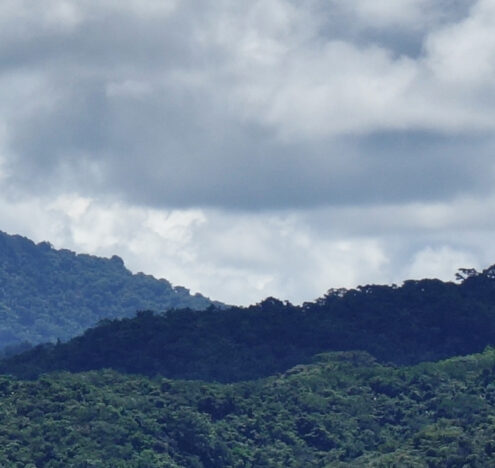In 2022, The Institute of Agricultural Research, IAR Zaria, celebrated its 100th year in existence, making it one of the oldest agricultural institutions in Nigeria. IAR Zaria was officially created in 1922 by Nigeria’s colonizers, the United Kingdom. Long before today, or even the official birth of IAR, the first corporate entity in the North — and a precursor to IAR — was established in 1905. It was a research station by the British Cotton Growing Association, established by the United Kingdom’s cotton growers and merchants to research and encourage the growth of the crop in the area.
The establishment of the research center and IAR are highlights in the history of institutional agricultural research and development in Nigeria. The center has been instrumental in helping Nigerian farmers to fight diseases, increase productivity, and push the boundaries of agriculture in the country. As recently as 2021, the institution was key to the creation, acceptance, and widespread adoption of a new maize strain.
What’s less known about IAR’s history are the dark realities of its creation, and its shock waves today. For colonialism to be profitable, colonial powers actively steered their colonies’ agricultural pursuits. IAR was crucial to the propagation of cash crops and an export-focused agricultural system. The establishment of IAR — and many agricultural centers by colonial powers — in rural areas was a two-way exploitation. “On the question of British interest in rural Nigeria, it was built on a twin pillar. In the first place, the rural areas were available only as primary resource areas for the export of raw materials. The second level of exploitation saw the rural areas as food productive centers for the few urban centers which eventually were to serve the basic food needs of the colonial inhabitants. This was absolutely a case of using the resources of the rural areas in “developing” the cities; just as available high tax revenue accruing from the rural communities did not match or correspond with the very low expenditures devoted for its development,” writes Sunday Aloko, a post-graduate student of Ahmadu Bellow University, Zaria — which is now the mother institution of IAR, in his research on IAR’s history.
These research centers and developments were created to produce raw materials for the British and to fuel the taxed urban areas that housed the majority of the colonial settlers. In addition to its extractive aims, the IAR was established on land appropriated from farmers and nearby communities without restitution, as established by audio interviews of villagers performed by Sunday and accounts of the colonial administrators.
CASH CROPS AND INNOVATION
The histories of institutes like IAR have always been tricky. On one hand, colonial agricultural institutions were tools for research and development, and many still remain relevant as structures of agricultural development. On the other hand, many of these institutions were also tools to enforce colonial control over farmers and communities. The service of these institutions for development does not absolve them of the true intention of their creators — as tools of exploitation.
In another study by Chubado Umaru and Umar Abubakar on colonial agricultural exploit in Adamawa, another state in Northern Nigeria, the authors acknowledged the impact of these efforts on improving irrigation in the state and across Nigeria, but inevitably, “the aim of colonialism is to exploit the physical, human, and economic resources of an area to benefit the colonizing nation.”
“the aim of colonialism is to exploit the physical, human, and economic resources of an area to benefit the colonizing nation.”
European powers pursued this goal by encouraging the development of a commodity-based trading system, a cash crop agriculture system, and by building a trade network linking the total economic output of a region to the demands of the colonizing state. “The economic goals of colonialism were simple: to provide maximum economic benefit to the colonizing power at the lowest possible price,” recount the authors, both researchers at the Centre for Research, Innovation and Development, Federal University Gusau, Zamfara, Nigeria.
Globally, colonizers actively encouraged — and often forced — the growth of plants to favor the colonizer’s needs. Cash crops were important to the massive wave of industrialization and ongoing wars in Europe. Cotton was important not just for clothing civilians, but also for the production of uniforms for soldiers fighting in World War II. Groundnuts and palm nuts were important to produce food and oil; secondary products included soap, skincare, and candles. Industrialization was like a growing child in constant need of food, and colonies were where that food could be gotten for cheap. In Northern Nigeria, the British encouraged the growth of cotton and groundnut and reveled in their success. “The export cotton output for 1940/1941 season was the highest for all time being at 17,226 tons, nearly 6,000 bales larger than the previous records,” wrote the Resident colonial officer, F.M. Noad, according to records quoted in Sunday’s account.
“They were coordinated efforts by colonial masters across Africa to decide what was planted and harvested, and to make sure whatever it was could optimally serve the colonial masters,” said Michiel de Haas, an associate professor of African economic history at Wageningen University and Research. In India, The British attempted and failed at introducing American-style cotton, but successfully introduced plants like tea. They also had larger impacts on the farming system and the trading of farm products, a phenomenon intertwined with the colonizer’s desire to control the colony’s economy.
In Sudan, the Gezira irrigation scheme, which was once the largest irrigation scheme in the world, was set up by the British while the area was under their rule. The scheme was used to encourage the growth of cotton which was an important monument testifying to Britain’s power and a key raw material for the industrial revolution occurring across Europe.
The French consistently encouraged and enforced the growth of cotton in its colonies. While many Malian farmers resisted the imposition of the cash crop, which brought small and unstable profits, the French ultimately created the Office du Niger and systematically forced the farmers to participate.
After the independence of many of these countries, through interventions, boycotts, and arguably neocolonial efforts, the French still continued to push the growth of cotton in many of their former colonies. Eventually, under continuous pressure, much of the farmers’ resilience gave way. Today, Mali — a former French colony — is Africa’s largest cotton producer, followed closely by Benin, Burkina Faso, Ivory Coast, and Cameroon, all former French colonies.
DENDRITIC TRADE
The most prevailing legacy of colonialism, per de Haas, is in the trading system of agricultural products. “They created a dendritic pattern of trading,” said de Haas, as he briefly bent down to draw a tree-like structure. “The farmers grew their products here,” he said, pointing towards the tip of the tree’s branch, “and instead of trading within themselves, trade was instead of focused on taking it here — the port,” de Haas said, using his pencil to draw a line to the trunk of the tree. Agricultural trade during colonial times was a dendritic drainage, and today, many countries are yet to recover from that pattern.
“Before colonialism,” said Michiel, “trade happened mostly within different branches of the tree.” Healthy economies are based on exchange, not extraction, and that was the case in the region before colonialism. Many African empires built complex trade networks amongst themselves, and in the process exchanged ideas culture, and technology. The Sokoto Caliphate was popular for its indigo-dyed textiles, as the Oyo empire was known for iron and aso-ofi, a type of woven cotton textile. These pre-colonial empires also built taxation systems. Colonialism, however, destroyed many of these healthy networks and drove trade instead directly to the newly built ports for export.
It was a circle. Encouraging and enforcing the growth of cash crops fed the one-way dendritic trade pattern, and the trade pattern in turn encouraged the growth of even more cash crops needed to grow the economies of colonial empires, leading to the displacement of many food and utility crops as farmers abandoned them for cash crops.
“Today, many of the colonized countries still trade in the same dendritic trade pattern,” said de Haas.
The effects of colonialism on agriculture and the global food system were widespread, and like the history of colonialism itself, very complex. De Haas said that it’s hard to place the blame squarely on the colonial occupiers, as that narrative disregards how much power local communities had to deny instructions and the history of resistance. The Tanganyika groundnut scheme, as just one example, was a post-war project by Britain in modern-day Tanzania to encourage groundnut production. It had to be shut down barely five years into the project after being severely undermined by the complexity of local conditions and strikes by African workers.
Across the British Commonwealth, the same pattern repeated. In India, a diverse crop pool of spices and fruits narrowed to mainly cash crops like cotton, wheat, and rice. In Nigeria, fields of vegetables were replaced with maize, and yam festivals slowly gave way to market days when empty merchant ships reached the port.
Today, the same extraction pattern ensures. African countries still trade their raw materials and food to European Nations, and in return import mostly manufactured goods. According to Eurostat, in 2021, 65% of African goods exported to the EU were food, drinks, raw materials, and energy while 68% of goods imported by Africa from the EU were manufactured goods. And only 16% of international trade in Africa happens between African countries, according to a 2017 report by the African Development Bank. The ghosts of colonialism continue to haunt the corn fields of Zaria, interwoven into the trade structures and the seams of the contemporary global economy.





















